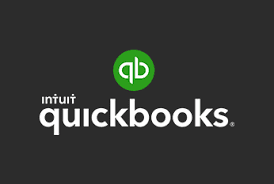Streamlining Business Operations with QuickBooks Freshsales Integration
In today's competitive business landscape, seamless integration between various software applications is essential for optimizing workflows and enhancing productivity. QuickBooks and Freshsales are two popular platforms that offer powerful functionalities in finance management and customer relationship management (CRM), respectively. In this blog post, we will explore the benefits and process of integrating QuickBooks with Freshsales. By leveraging the integration between these two platforms, businesses can streamline their operations, improve data accuracy, and enhance customer relationship management.
Understanding QuickBooks and Freshsales
QuickBooks is a widely used accounting software that helps businesses manage their finances, including invoicing, expense tracking, and financial reporting. On the other hand, Freshsales is a CRM platform that assists businesses in managing customer relationships, tracking leads, and nurturing sales opportunities.
Benefits of QuickBooks Freshsales Integration
The integration between QuickBooks and Freshsales offers several advantages that can positively impact business operations:
Streamlined Data Sync: Integration eliminates the need for manual data entry and reduces the chances of errors or discrepancies. Customer information, invoices, payments, and sales transactions can seamlessly sync between QuickBooks and Freshsales, ensuring up-to-date and accurate data across both platforms.
Enhanced Sales and Finance Visibility: Integration provides sales teams with valuable insights by giving them access to financial data from QuickBooks within the Freshsales interface. This visibility enables sales representatives to make informed decisions, understand customer purchasing patterns, and identify cross-selling or upselling opportunities.
Efficient Sales Order Processing: Integration allows for a smooth flow of information from Freshsales to QuickBooks, enabling automatic generation of invoices and tracking of payments. Sales teams can create quotes, convert them into sales orders, and seamlessly initiate the invoicing process within Freshsales, minimizing manual effort and improving efficiency.
Improved Customer Experience: Integration enables a holistic view of customer interactions by consolidating data from QuickBooks and Freshsales. Sales representatives can access customer financial history, outstanding invoices, and payment status, allowing them to provide personalized and tailored customer experiences.
Simplified Financial Reporting: Integration between QuickBooks and Freshsales ensures that financial data from sales transactions is accurately reflected in QuickBooks. This simplifies financial reporting processes, enabling businesses to generate comprehensive reports and gain insights into revenue, expenses, and profitability.
Integration Process and Configuration
To integrate QuickBooks with Freshsales, businesses need to follow a step-by-step process:
Choose an Integration Method: Evaluate the integration options available for QuickBooks and Freshsales. This may include using third-party integration tools, application programming interfaces (APIs), or pre-built integration solutions provided by the software vendors.
Assess Integration Requirements: Determine the specific integration requirements based on your business needs. Identify the data points that need to be synced between QuickBooks and Freshsales, such as customer information, sales transactions, invoices, and payments.
Select an Integration Solution: Based on the chosen integration method, select a reliable integration solution that meets your requirements. Consider factors such as ease of setup, scalability, ongoing support, and compatibility with future software updates.
Configure Integration Settings: Once the integration solution is in place, configure the integration settings according to your preferences. This may involve mapping data fields between QuickBooks and Freshsales, setting up synchronization intervals, and defining rules for data transfer.
Test and Validate Integration: Conduct thorough testing to ensure the integration is functioning as expected. Test data synchronization, invoice generation, payment tracking, and other relevant functionalities to verify accuracy and consistency.
Train Users and Provide Support: Train your team members on how to effectively utilize the integrated QuickBooks and Freshsales environment. Offer ongoing support and address any questions or issues that may arise during the integration process.
Best Practices for Successful Integration
To maximize the benefits of QuickBooks Freshsales integration, consider the following best practices:
Define Data Ownership and Access Control: Clearly define roles and responsibilities for data ownership and access control between sales and finance teams. Establish guidelines on who can view, edit, and delete data within both platforms.
Regular Data Cleanup and Maintenance: Implement a data hygiene process to ensure data accuracy and reliability. Regularly review and update customer records, invoices, and payments to maintain a clean and organized data environment.
Keep Software Versions Updated: Stay up to date with the latest versions of QuickBooks and Freshsales, as well as any integrated tools or connectors. This ensures compatibility, security, and access to new features or bug fixes.
Monitor Data Synchronization: Regularly monitor data synchronization between QuickBooks and Freshsales to identify and resolve any syncing issues promptly. Monitor error logs, review data transfer logs, and address any discrepancies in a timely manner.
Train Users on Integration Features: Provide comprehensive training to sales and finance teams on the integrated features and functionalities. Empower them to leverage the integration to its fullest potential and encourage collaboration between the teams.
Customization and Workflow Automation
One of the key advantages of integrating QuickBooks with Freshsales is the ability to customize and automate workflows. Consider including the following points in the blog:
Custom Field Mapping: Customize the integration settings to map specific fields between QuickBooks and Freshsales, ensuring that relevant data is seamlessly transferred and aligned.
Automated Invoice Generation: Streamline the invoicing process by setting up automation rules. For example, you can configure the integration to automatically generate invoices in QuickBooks when a deal is closed or a sales order is approved in Freshsales.
Payment Tracking and Notifications: Utilize automation to track payments and send notifications to sales representatives or finance teams when invoices are paid or overdue. This helps streamline cash flow management and improves collections.
Conclusion
Integrating QuickBooks with Freshsales offers businesses a seamless and efficient workflow by combining finance management and customer relationship management. The benefits of data synchronization, enhanced visibility, streamlined sales order processing, improved customer experience, and simplified financial reporting make this integration a valuable asset for businesses. By following the integration process, configuring settings accurately, and implementing best practices, organizations can optimize their operations, drive growth, and deliver exceptional customer experiences by harnessing the power of QuickBooks Freshsales integration.
.png)
Comments
Post a Comment